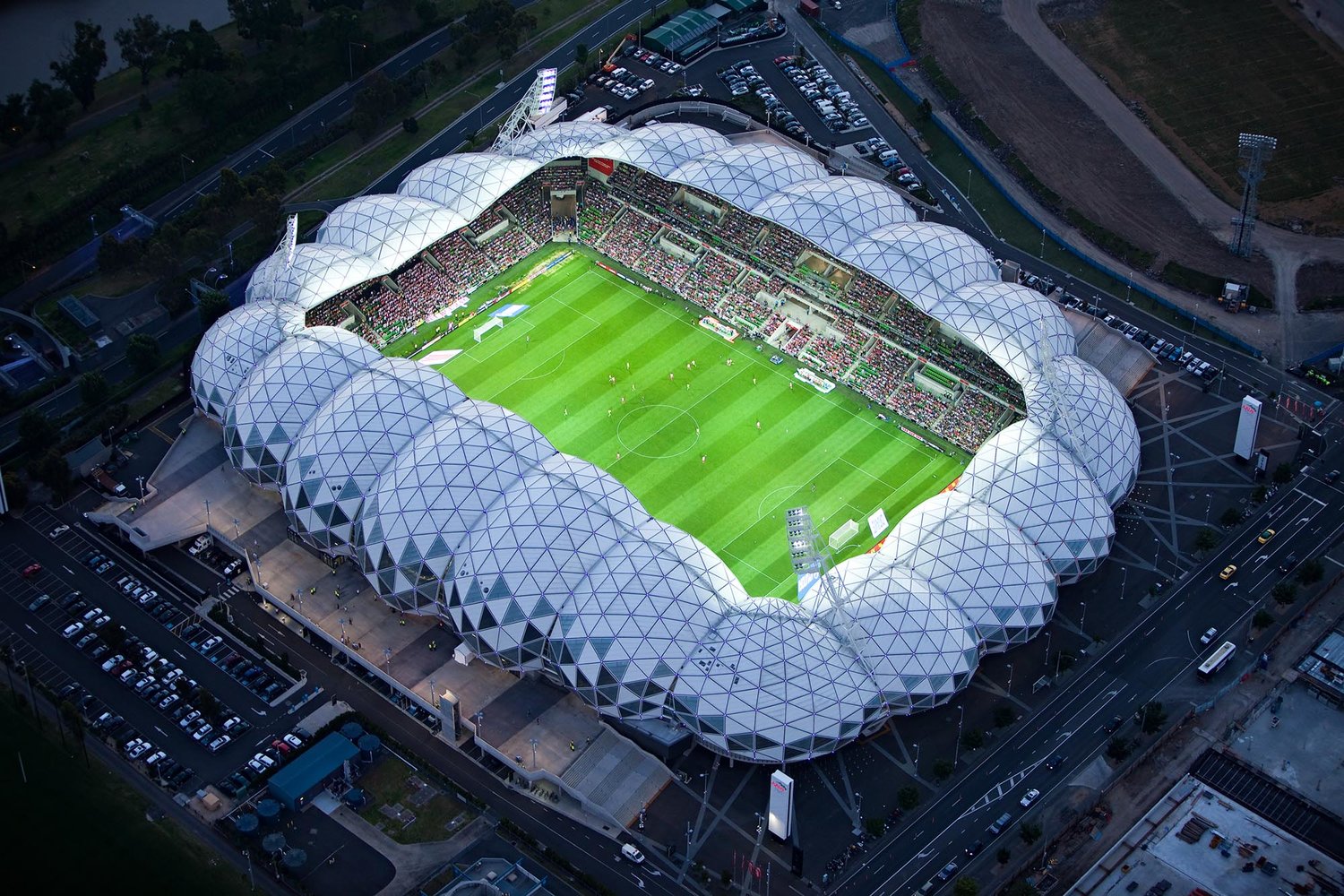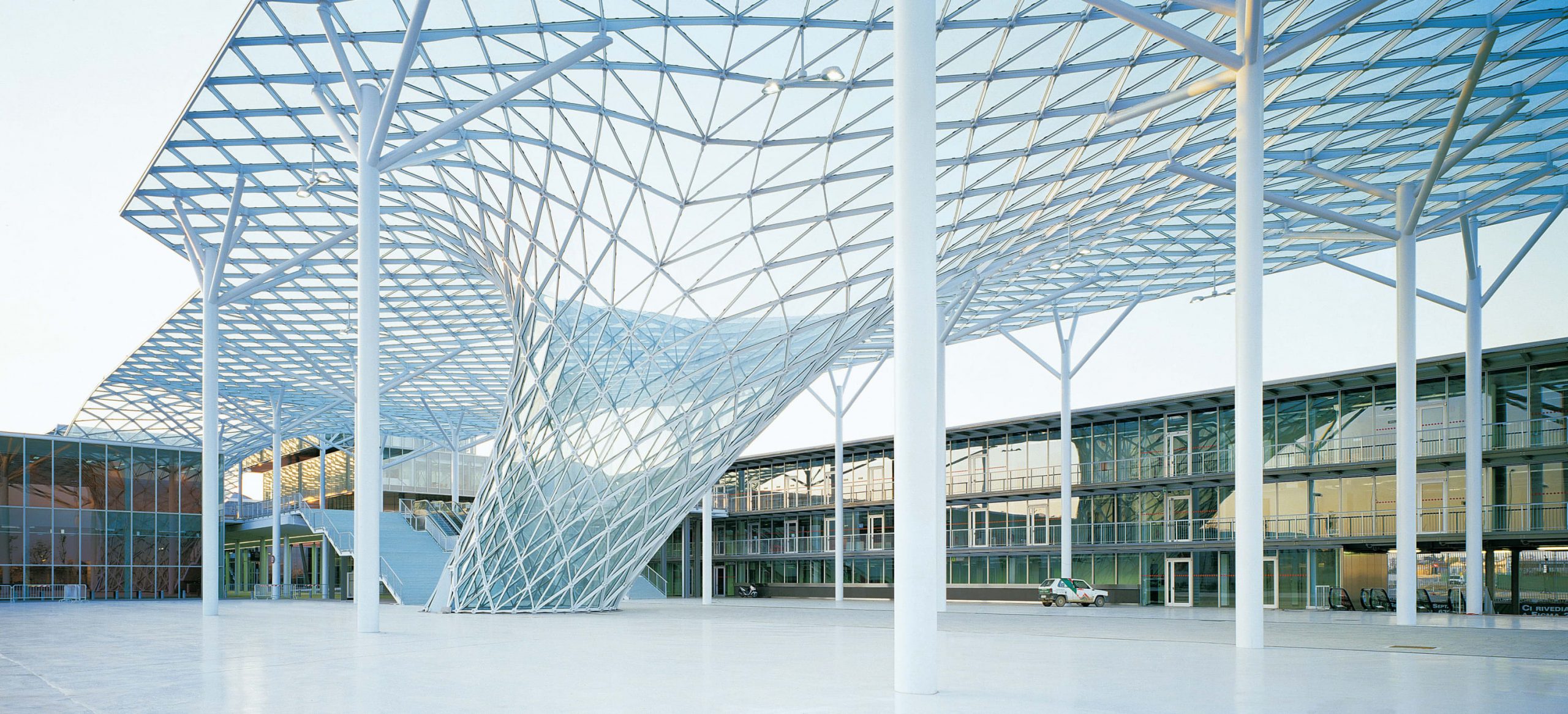AAMI Park Stadium
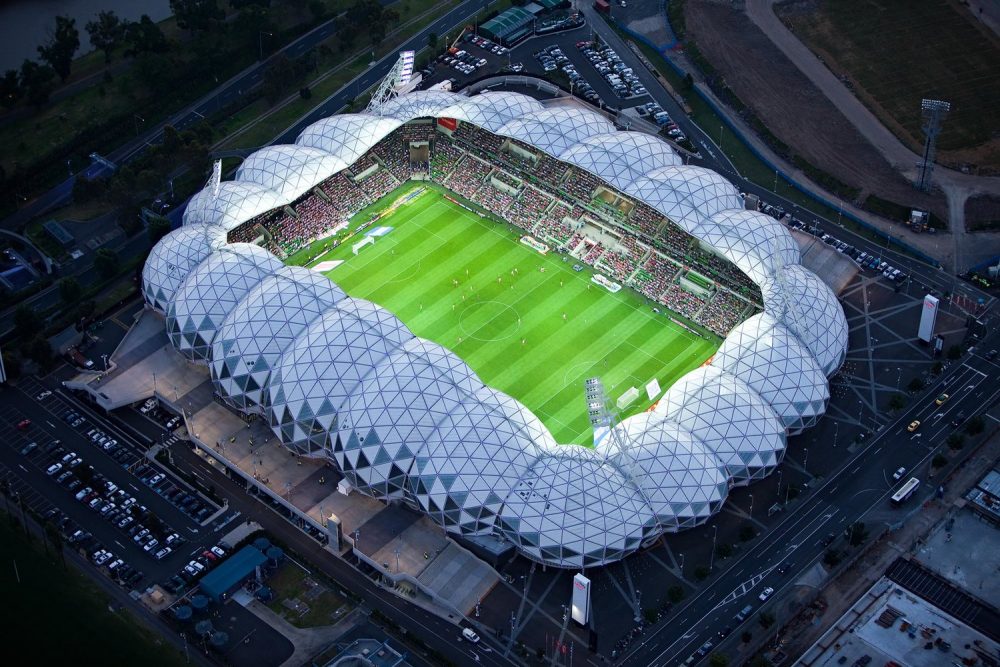
At first glance, the idea of creating a new stadium at Australia’s sporting capital – Melbourne, sounds like a challenging feat. Spanning at 55,480 sqm with a seating capacity of 30,050, AAMI Park Stadium is the city’s first large purpose-built rectangular stadium that represents its efforts to have a strong architectural lineage while integrating it with public space.
Hence, the prime philosophy of the project anchors on the idea of a perfect seating bowl, with an ascending seating arrangement designed to optimize its east and west flanks, maximize sightlines, and highlight its proximity to the structure’s main activity. This idea was eventually manifested into a multi-code sports campus with an easily-accessible stadium that is highly-utilized by clubs and various elite players.
A clever structural solution to an otherwise complex architecture challenge is the incorporation of a bio-frame roof, which became the most defining element of the stadium. Made from 20 interdependent shells, it utilizes 50% less steel than conventional stadium structures. It also provided uninterrupted views, offering as high as 80% coverage for spectators – all the while maximizing natural light and ventilation.
Its unique roof design features an array of interlocking domes with a panelized façade surface made from triangular facets of metal, glass, and rainwater facilities. Thousands of LED light covered its exteriors, which can be programmed to display a variety of patterns and colors to suit the event taking place within the stadium.
The geometry of its roof not only answers the need for maximized views but also to utilize the available sunlight and airflow. This is why the lower shells of its overall form are oriented at the stadium’s northern and southern ends. Each shell reflects light on its internal face, ensuring a unique distribution of internal light throughout the seating bowl. Furthermore, this reduces the number of light poles needed to illuminate the stadium.
Aside from being identified as a world-class stadium with an innovative roof, the rest of the structure is put to full use – with its base housing offices for sports organizations, therapy areas, club training rooms, gyms, and swimming pools.
A series of civic-scaled entry stairs and flanking urban plazas allowed the stadium to integrate into its landscaped context. The now-activated relationship between the stadium and the streetscape offered a strong visual connection with the parklands, the river, and eventually – the city.
What truly defines the AAMI Park Stadium is not its ideal seating bowl alone, but a new structural hybrid of arches, shells, and cantilevers that eventually became synonymous to the city of Melbourne.
- Australia
- Cox Architects and Planners
- https://www.coxarchitecture.com.au/project/aami-park/
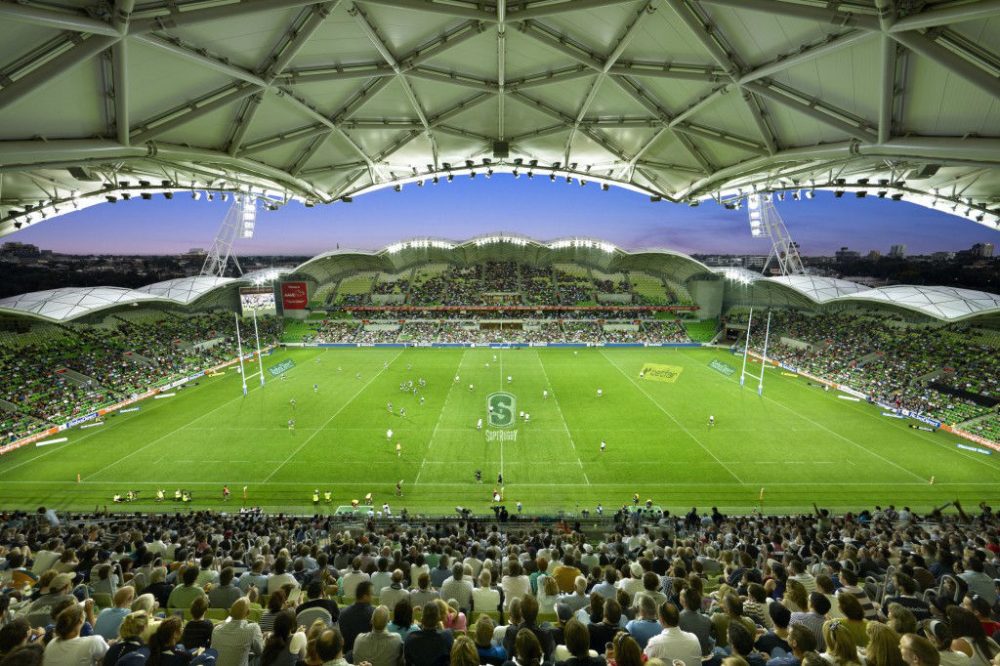


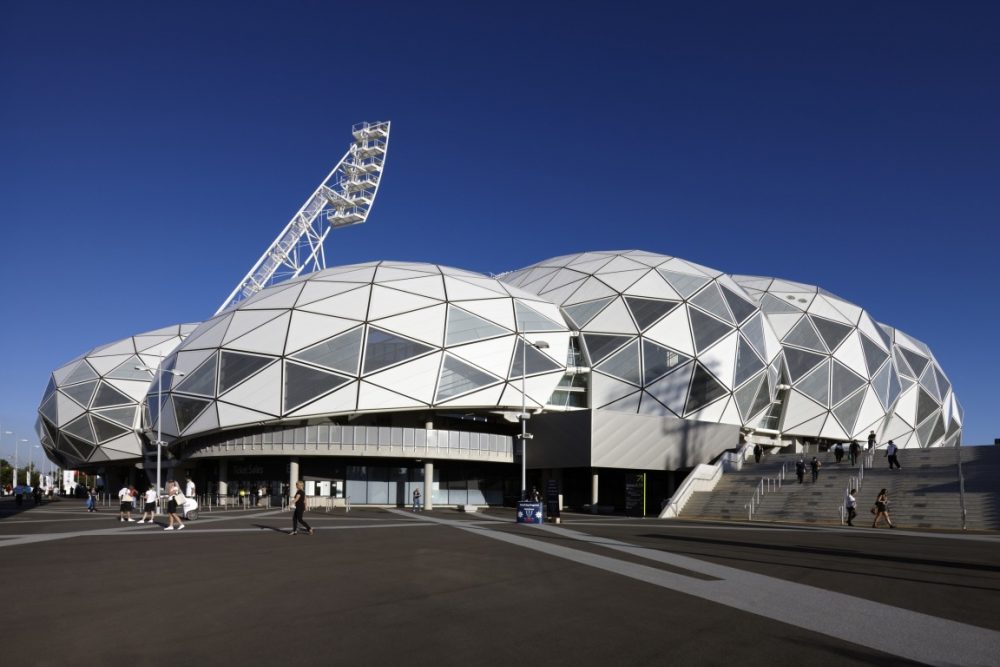

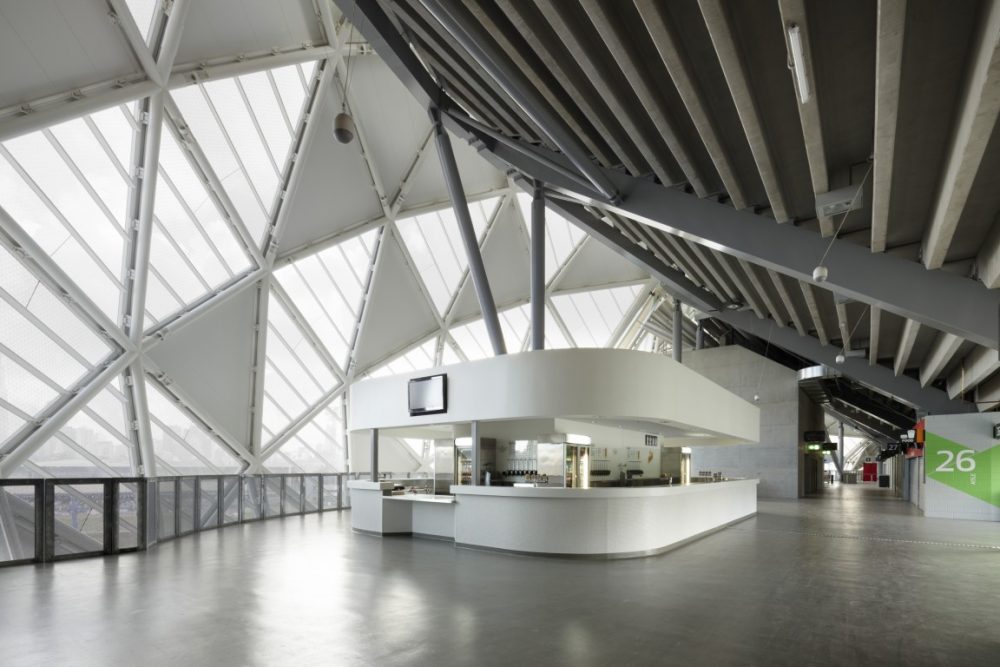
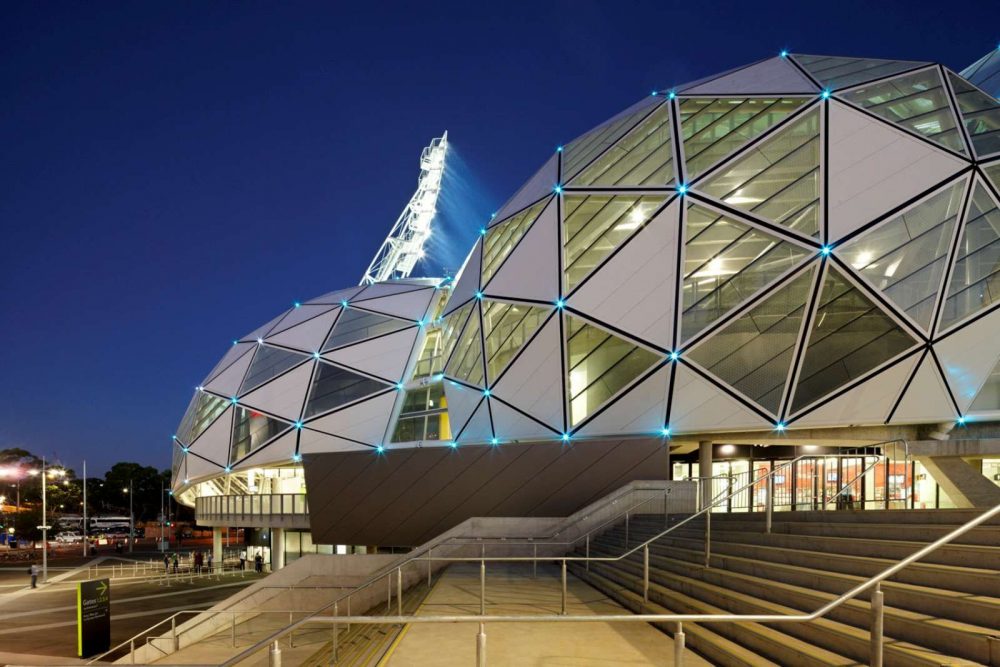

Category Sports
